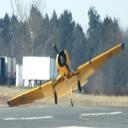Yahoo Answers is shutting down on May 4th, 2021 (Eastern Time) and beginning April 20th, 2021 (Eastern Time) the Yahoo Answers website will be in read-only mode. There will be no changes to other Yahoo properties or services, or your Yahoo account. You can find more information about the Yahoo Answers shutdown and how to download your data on this help page.
Trending News
WWII pilot records question?
My great-grandfather was a B-24 pilot during WWII. I've gone through countless records looking for information on him. For some reason I can't find him in any records. I know he was there, but where would info such as his missions or his airplane be?
3 Answers
- jimLv 71 decade agoFavorite Answer
In any genealogy hunt, the first place to start is surviving relatives. Maybe your grandparents (if still alive) heard stories from him; maybe they have some of his memorabilia. They might even have started this work themselves. Also, any of his surviving relatives could help.
His missions would be in the squadron, or group (if he was group staff) records, along with assigned tail-number. If you know his unit-I can't emphasize how important that's going to be on your hunt-and that unit is still active AF/ANG/Reserve, the unit historians can help.
First step is finding out when he served, and what theater(s): B24s were in the ETO, Med, PAC, and China/India/Burma. Next step as I mentioned, is which unit.
For this information, the National Archives, will be of some help, as they will give dates, and theater, plus if he was rotated home after his alloted missions, that information would be there too. Normally, WW2 discharge paperwork will not have unit(s) assigned. Nor will you find his logbook-personal issue item.
Once you get his unit, you can search online for unit histories, the USAF archives etc. That will give some more information. Something else you can do-once you've got that critical piece of information is place an ad in the Air Force Times asking for information.
Some stuff on your Great-Grandfather's weapon system that you may not be aware of:
- The B24 had a higher ceiling than the B17. Which meant it literally was too high for some German and Japanese fighters to intercept easily (Fw190A, and A6M2 Zero).
- The B24 carried a heavier bombload than the B17
- It also flew faster than the B17-thanks to its more advanced wing design. It had a faster landing speed as well.
- It carried that heavier bombload farther than the B17. This made it very useful in the CBI and PAC theaters.
- It was the first production US bomber with a tricycle undercarriage-i.e. a nosewheel.
- Some B24s were modified to fly what we would now call "Special Ops Missions" to land agents, pick them up and resupply them
- The B24 was the real key in reducing the UBoat threat in the mid-Atlantic. An excellent patrol aircraft thanks to its range, it could cover convoys across the North Atlantic.
With all these accomplishments, you might wonder how come you hear more about B17s. That was due to partly to the Liberator's range: they were stationed more in the mid-lands of Britain. The B17 groups were all stationed around London and Kent. The press corps found it easier to get human interest/propaganda stories around the London area (the press being about as diligent then as now) than going through the hassle of traveling north.
Source(s): Retired AF officer, and military historian - Howard LLv 71 decade ago
Have you filed a request for his records with the Army Records Center? I'm not sure what information the record would include but if you can get his squadron record you can probably do a search for the squadron records or possibly contact some members who are still living. Possibly the link to the Eighth Air Force Records will help.
- Warbird PilotLv 71 decade ago
If you know the unit, try the USAF Historical Agency at Maxwell AFB, Alabama.
Unfortunately, you get the best results if you go there.




